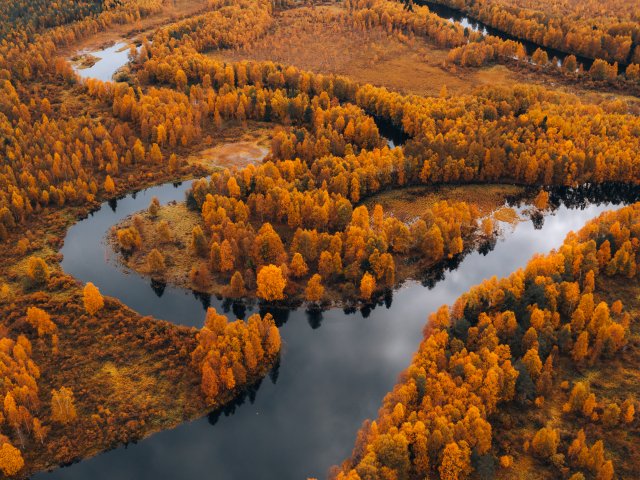Pictures for October 7th, 2025
Kyngaas, Pudasjaarvi, Finland (Fall)
Kyng?s is a small village located in the municipality of Pudasj?rvi, which is in the Northern Ostrobothnia region of Finland. Pudasj?rvi is known for its natural beauty, characterized by vast forests, numerous lakes, and rivers, making it an attractive destination for outdoor enthusiasts. The area is popular for activities such as hiking, fishing, and cross-country skiing, particularly in the nearby Sy?te National Park. Kyng?s itself is a rural community, and like many villages in this part of Finland, it offers a peaceful and tranquil lifestyle. The village is part of a region that experiences long, cold winters and relatively mild summers, typical of the Finnish climate. The local culture is influenced by traditional Finnish customs, and the community often engages in local events and festivals that celebrate these traditions. The economy of the area is largely based on agriculture, forestry, and tourism. Pudasj?rvi, the larger municipality to which Kyng?s belongs, provides essential services and amenities to the residents of Kyng?s, including schools, healthcare facilities, and shops. The region is also known for its efforts in promoting sustainable development and preserving its natural environment. Overall, Kyng?s offers a glimpse into the serene and nature-oriented lifestyle of rural Finland, with a strong sense of community and connection to the natural world.
Aspen Trees, Grand Teton National Park, WY (Fall)
Aspen trees in Grand Teton National Park, Wyoming, are a stunning natural feature, especially noted for their vibrant fall colors. These deciduous trees are known for their smooth, white bark and their leaves that tremble or "quake" in the wind due to flattened petioles. In the fall, aspen leaves turn a brilliant yellow, creating a striking contrast against the evergreen forests and rugged mountain backdrop of the Tetons. Aspens are clonal, meaning they often grow in large colonies derived from a single root system, making them one of the largest living organisms by mass. This interconnected root system allows them to thrive in various conditions and recover quickly from disturbances like fires. In Grand Teton National Park, aspens are typically found in mixed conifer and aspen forests, often at lower elevations. They provide essential habitat and food for wildlife, including elk, deer, and various bird species. The presence of aspens also contributes to the park's biodiversity, supporting a range of plant and animal life. Visitors to the park can enjoy the beauty of aspen groves along many of the park's trails and scenic drives, particularly during the fall when the foliage is at its peak color. The contrast of the golden aspens against the dramatic mountain scenery makes for breathtaking views and excellent photography opportunities.
















